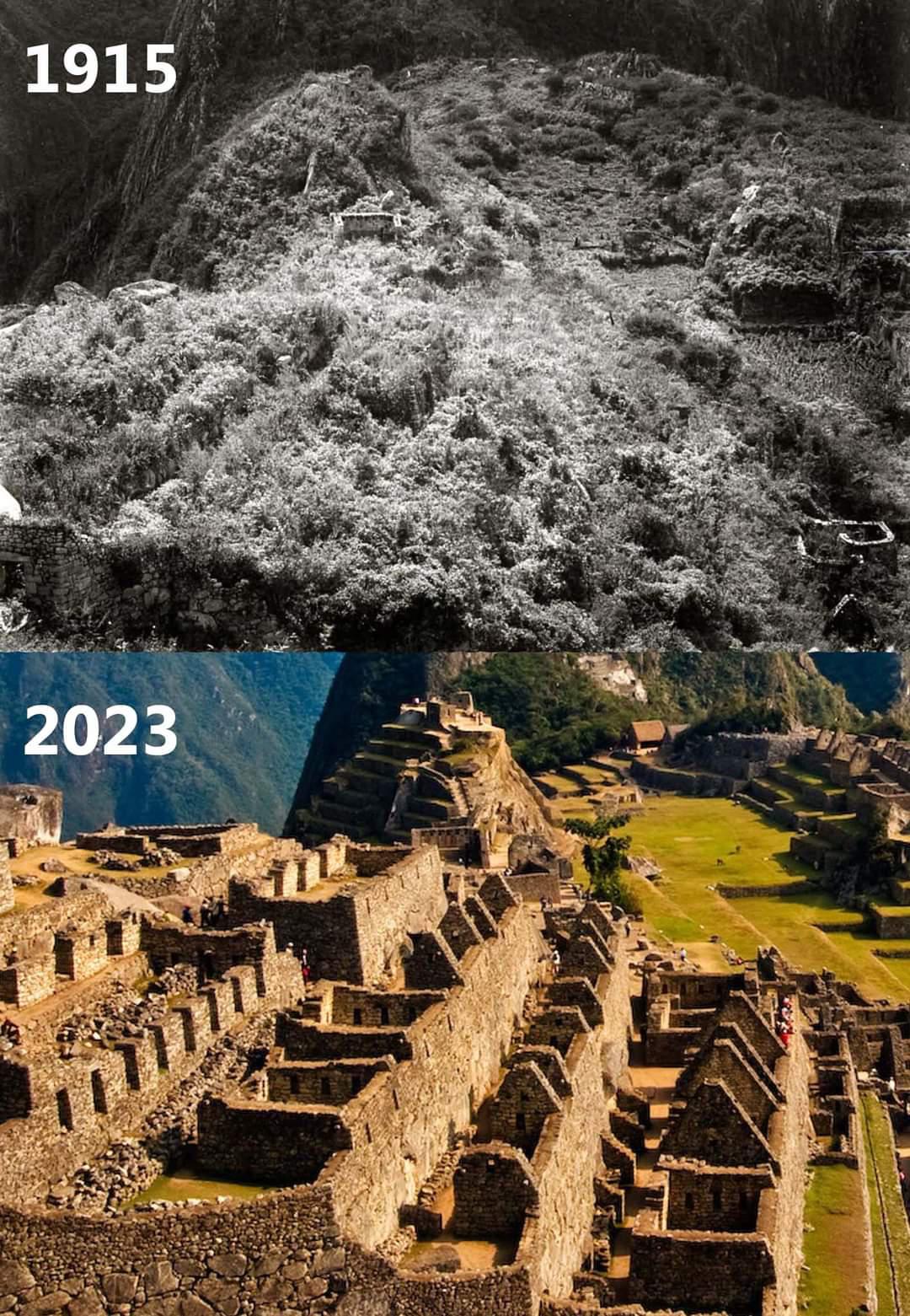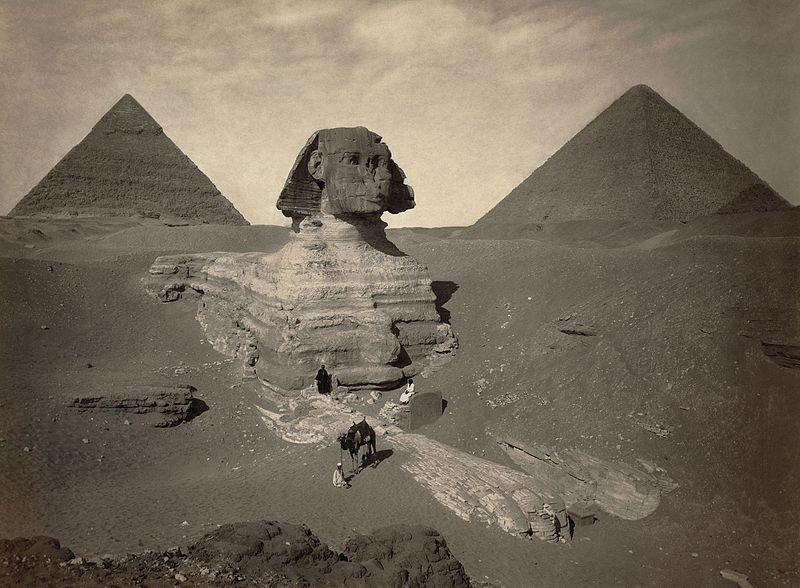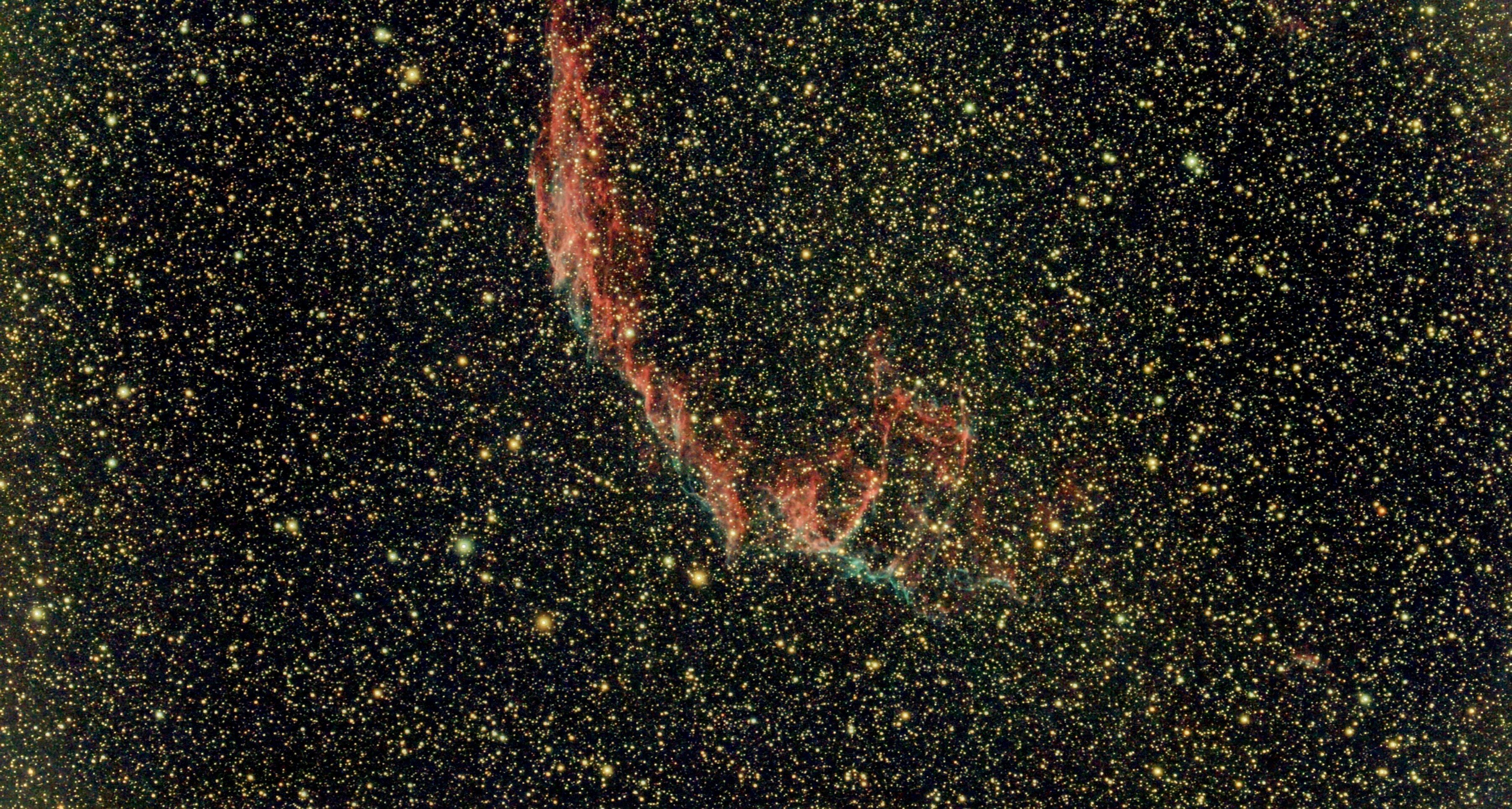I looked all over for a date and got everything from “early 1800s” to “late 1800s” but nothing exact, so I had to make an educated guess. The first cameras practical enough to take such a photo were developed around 1840 and the excavations began in 1867.
Damn, this really puts into perspective for me that the sphinx was once in the center of a thriving and powerful civilization that completely died. All of that sand accumulated over thousands of years wiping out every trace of the world that used to be there and we only have evidence for it in the handful of mega structures they managed to build in an ocean of nature identical to any other undeveloped part of earth.
I met a traveler from an antique land,
Who said—“Two vast and trunkless legs of stone
Stand in the desert. . . . Near them, on the sand,
Half sunk a shattered visage lies, whose frown,
And wrinkled lip, and sneer of cold command,
Tell that its sculptor well those passions read
Which yet survive, stamped on these lifeless things,
The hand that mocked them, and the heart that fed;
And on the pedestal, these words appear:
My name is Ozymandias, King of Kings;
Look on my Works, ye Mighty, and despair!
Nothing beside remains. Round the decay
Of that colossal Wreck, boundless and bare
The lone and level sands stretch far away.”- Percy Shelley
Fun fact: Shelley wrote that poem in a friendly competition with Horace Smith. Here is Smith’s version:
In Egypt’s sandy silence, all alone,
Stands a gigantic Leg, which far off throws
The only shadow that the Desert knows:—
“I am great OZYMANDIAS,” saith the stone,
“The King of Kings; this mighty City shows
The wonders of my hand.”— The City’s gone,—
Naught but the Leg remaining to disclose
The site of this forgotten Babylon.We wonder — and some Hunter may express
Wonder like ours, when thro’ the wilderness
Where London stood, holding the Wolf in chace,
He meets some fragment huge, and stops to guess
What powerful but unrecorded race
Once dwelt in that annihilated place.— Horace Smith, “Ozymandias”
That is beautiful as well!
I kinda like it better since it makes the same criticism of people who think their works will last forever, but then goes a step further and exposes the same fallacy in modern peoples.

Born too late to discover ancient ruins.
Born too early to discover urban ruins.
Born just in time to watch the world die.
Imagine being an early explorer and being one of the first people to see it since the fall of the Egypt. I don’t know how close they were to populated settlements, but just… imagine finding a structure no one has seen in hundreds, possibly thousands of years. It’d make the imagination go wild.
They are still discovering ancient ruins all the time. In fact, Lidar makes it easier.
https://www.bbc.com/travel/article/20230704-ocomtn-a-long-lost-maya-city-that-was-just-discovered
Yeah but we wont dig it up now cause we don’t have the technology to preserve them
Archaeologists still do lots of digging, and sometimes even leave what’s dug up there, although it’s often reburied. And it is true that archaeology is inherently destructive. But it’s sometimes also necessary to learn anything about the past. Also, in the case of the Maya, it’s often more about clearing away vegetation than it is digging things up. The vegetation is already being destructive, so clearing it is often the best thing to do.
Post reminded me of Machu Picchu, before and after. It was practically completely grown over.
If memory serves, there were locals in the area that knew vaguely of an old ruin on top of the hills, and I think some had even gone there to look around, but the knowledge of how extensive the structures were and how much was still intact were completely lost to time, along with the original name.
When it was rediscovered to the outside world in the early 1900s, there were a couple of families living in the ruins, and inscriptions and evidence that other people had also made use of the ruins over the centuries.
Later, anthropologists realized from older writing that the site had been rediscovered and forgotten several times by the outside world.

i was getting ready for forty winks
when, lo, up popped this post on the Sphinx;
that ensued in a long stroll
down the wikipedia rabbithole
and a whole host of now-purple hyperlinks.
Fantastic find!
Thanks. I’m really annoyed I can’t accurately date it though.
Why didn’t you just look at the metadata? It appears this photo was taken in the year “© All Rights Reserved”
Big “It appears you have internet network connectivity problems” energy
I felt that copyrighting it in the year nothing might have been a typo.
Also, there’s absolutely no question that it’s public domain.
Also, there’s absolutely no question that it’s public domain.
AfaIk, this depends on whether we know the photographer. If the author of a work is unknown, it is deemed to be orphaned. In some countries, this may lead to problems when using the work.
Which country would not recognize a 19th century photo as public domain? Because the Berne Convention, which most countries are signatories to, would absolutely make it public domain.
If the author is unknown because for example the author was deliberately anonymous or worked under a pseudonym, the Convention provides for a term of 50 years after publication (“after the work has been lawfully made available to the public”). However, if the identity of the author becomes known, the copyright term for known authors (50 years after death) applies.
https://en.wikipedia.org/wiki/Berne_Convention
I didn’t know the information of that section. As it’s very very unlikely that the author of a 19th century photo is dead for less than 50 years, the uncertainty of someone claiming the copyright is close to zero.
A good year for art it was.
A not very trustworthy looking hungarian website says 1890
Maybe, between two excavations, the wind has partly filled up the cavity of the previous excavation with sand and thus, the progress wasn’t continuous.
This is supposedly from 1867 - 1878:

Wikimedia Commons
I find it a bit amusing that the sepia toning effectively colourised the image.
I thought it was a scifi spaceship at first

Por que no los dos?

It is based on Goa’uld technology…
It’s too small for a spaceship but it does have 40k spaceship vibes.
Couldn’t find the date?
Did you check the EXIF data?
The exif data is all in hieroglyphics.
What year was 🕊️🕊️🌊☀️🦉?
I too was trying to find the date of this photo this week. To narrow your time span, the first aerial photograph (also from a balloon) was taken in 1858 in France. So this photo had to have been taken after that point.
Fits-sits rule.
Is it just a fabrication that Germans in WWII shot off the nose, then? Because it looks as if it’s already missing the nose here.
As far as I know, that is a myth. It fell off in antiquity.

Allegedly, it happened around 50 B.C.Crazy that we’re closer to Asterix’s time than they were to when the Sphinx was built.
Yes, the Great Pyramids and the Sphinx emanate the aura of eternity.
Cocaine or a Michael Jackson thing?
https://www.smithsonianjourneys.org/blogs/blog/2020/05/20/photo-what-happened-to-the-sphinxs-nose/
It is possible it was destroyed by a Muslim for religious reasons though it is impossible to truly confirm.
As the article is lacking some information, here is a translstion of a part of the German Wikipedia article:
The Arab historian and physician Abd al-Latif al-Baghdadi (1161-1231) from Baghdad described the Great Sphinx and its magnificent nose in the 13th century. In the Middle Ages, the sphinx was still worshipped as a god by some sections of the population, while devout Muslims abhorred this cult. In Arab times, the Sphinx was given the name أبو الهول / Abū l-Haul, which means “father of terror”. In one of his books, the Arab historian Al-Maqrīzī (1364-1442) reports that the devout sheikh of a Cairo Sufi monastery, Mohammed Saim el-Dar (Muhammad Şā’im ad-Dahr, English: “Someone who fasts all the time”), was a fanatical iconoclast who cut off the nose of the sphinx in 1378 and was then killed by the angry crowd.
The Danish artist Frederick Ludewick Norden (1708-1742) produced engravings of various Egyptian buildings in 1738 on the orders of King Christian VI. Among them was one with the buried Sphinx (Tête colossale du Sphinx), which also shows the head without a nose (published in French in 1755). The rumour that either Napoleon Bonaparte’s soldiers or those of the Ottoman Empire destroyed the nose during artillery exercises has thus been proven false. Napoleon was an enthusiast of Egypt, describing the country as the “cradle of the sciences and arts of all mankind” (l’Égypte - le berceau de la science et des arts de toute l’humanité). The scientists who came to the country with him also drew the Sphinx without a nose.
TLDR: As the Great Sphinx still has had its nose around 1200 A.D. and was already noseless in 1738, its nose must have been destroyed in the meantime, supposedly by some furious sheikh in 1378.
Imagine being so furious and pathetic to destroy the nose of a statue 3+ thousand years old.
Indeed. However, somehow one can understand his furor, without condoning the destruction, as the people were worshipping the Sphinx as a god.
As well, similar things still happen even today:
In 2001, we could see in TV as the Taliban were destroying the Buddha statues in Bamiyan, which were about 1500 years old or in 2015, as the barbarians of Daesh were demolishing the ruins in Palmyra, a remainders of a city almost 2000 years old. These rages happened despite nobody was actually worshipping the statues, just because they did exist.
It’s true. Hitler wanted to move the Sphinx to his base on the other side of the moon. Of course, moving the whole thing would be too difficult, so they only took the nose.
Hah.
Just in case, though, I’ll clarify: what I’d heard was that, when the German army was in Egypt in WWII, some German soldiers used the nose for target practice and pulverized it. No aliens required.
Edit: I’m remembering the story wrong: the target practice thing is attributed to Napoleon’s troops using the nose as target practice for cannon. It’d unsubstantiated in either case; it turns out no one alive really knows.
Strangely the recent documentation doesn’t mention that.
recent documentation
uploaded 15 years ago
I hate to break it to you, but this information is heavily outdated.
The Germans never got even close to where the sphinx is located in WW2. The Allied stopped the Axis advance in North Africa hundreds of kilometres west of there.
It looks like a monkey face in these two.
Why on earth would they need to excavate a balloon?
I can’t find a date.
Have you tried tinder?
There’s a hole in its head
Black as your soul
I’d rather die than give you control
I don’t think that’s a hole. I think it’s the opposite, and an optical illusion.
Not true. "Shaft A
Baraize also paved with cement this deep hole (shaft A) on the top of the Sphinx’s head. The hole measures approximately 5 feet square and nearly 6 feet deep. An iron trap door was fitted to the mouth of the hole. It has been theorized that the hole, began as a means for affixing a headdress to the sphinx in the manner of the New Kingdom (see photo below), was later deepened in search of hidden chambers." From this site
And picture from 1925
 and covered later
and covered later
Thanks!
From a quick glance the pic looks a bit like the sand cruiser they used to throw Luke into the sarlacc pit.
Is it weird that I love this photo a lot more than I feel anything at all for the statue itself?










